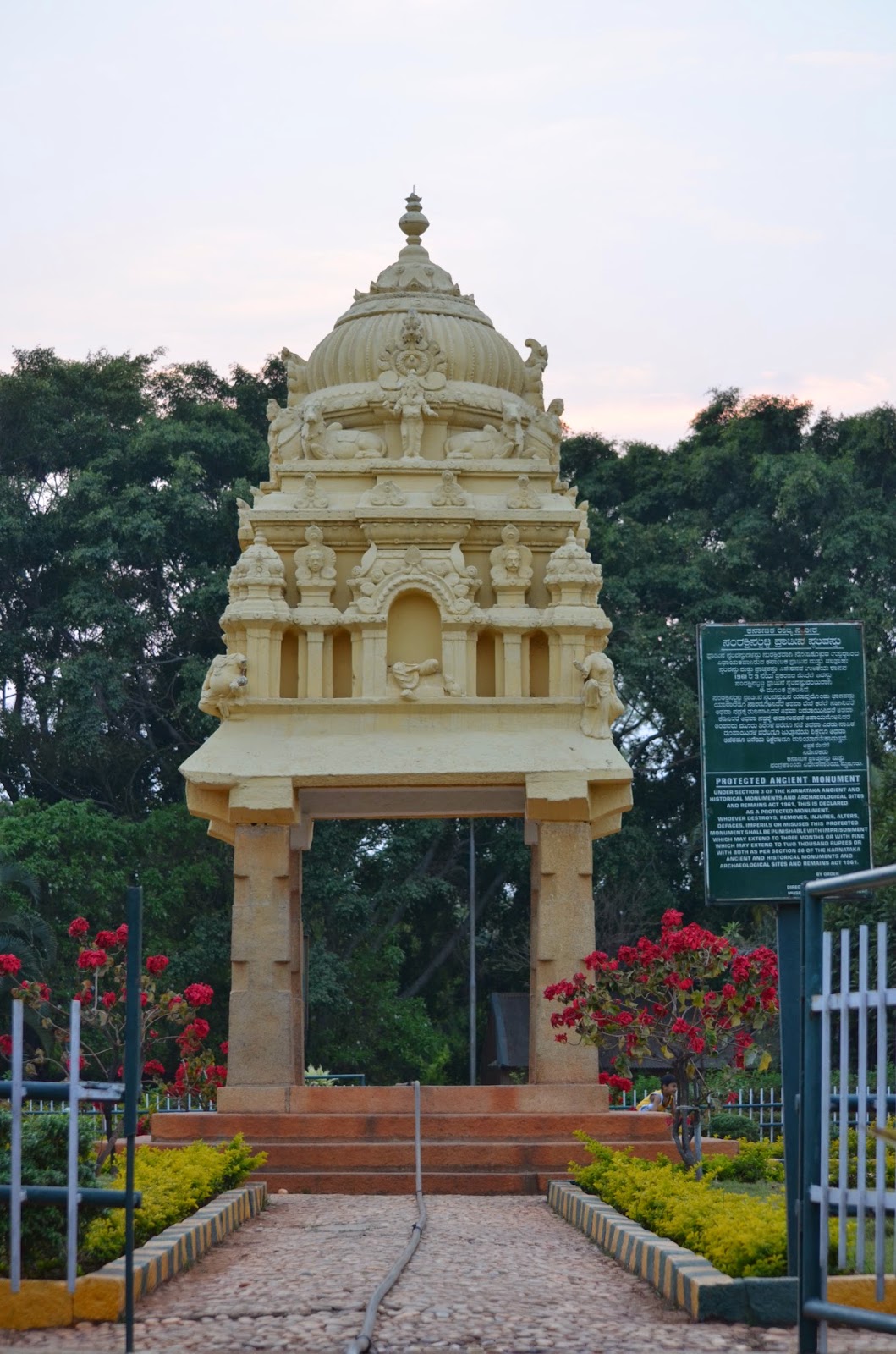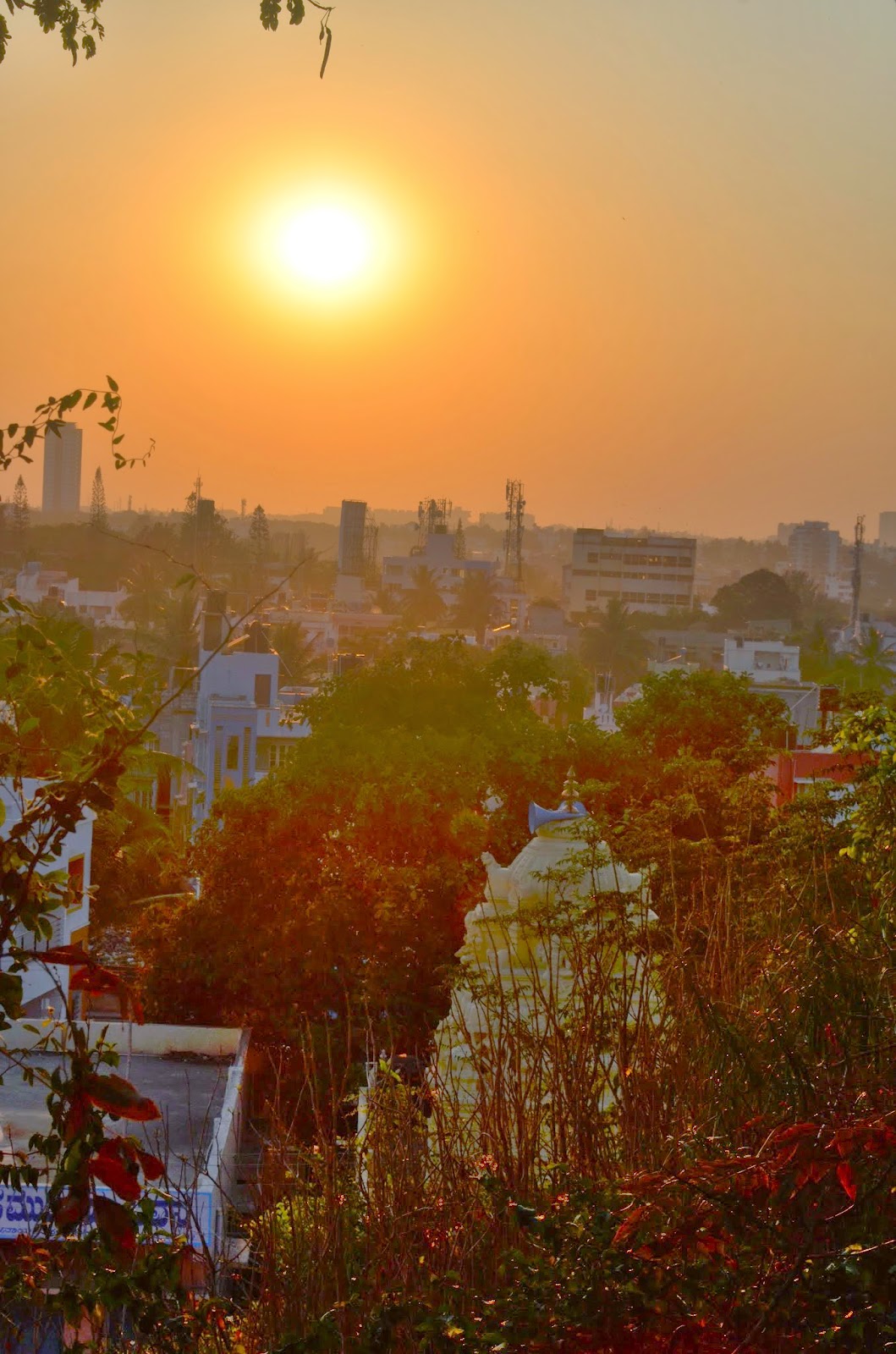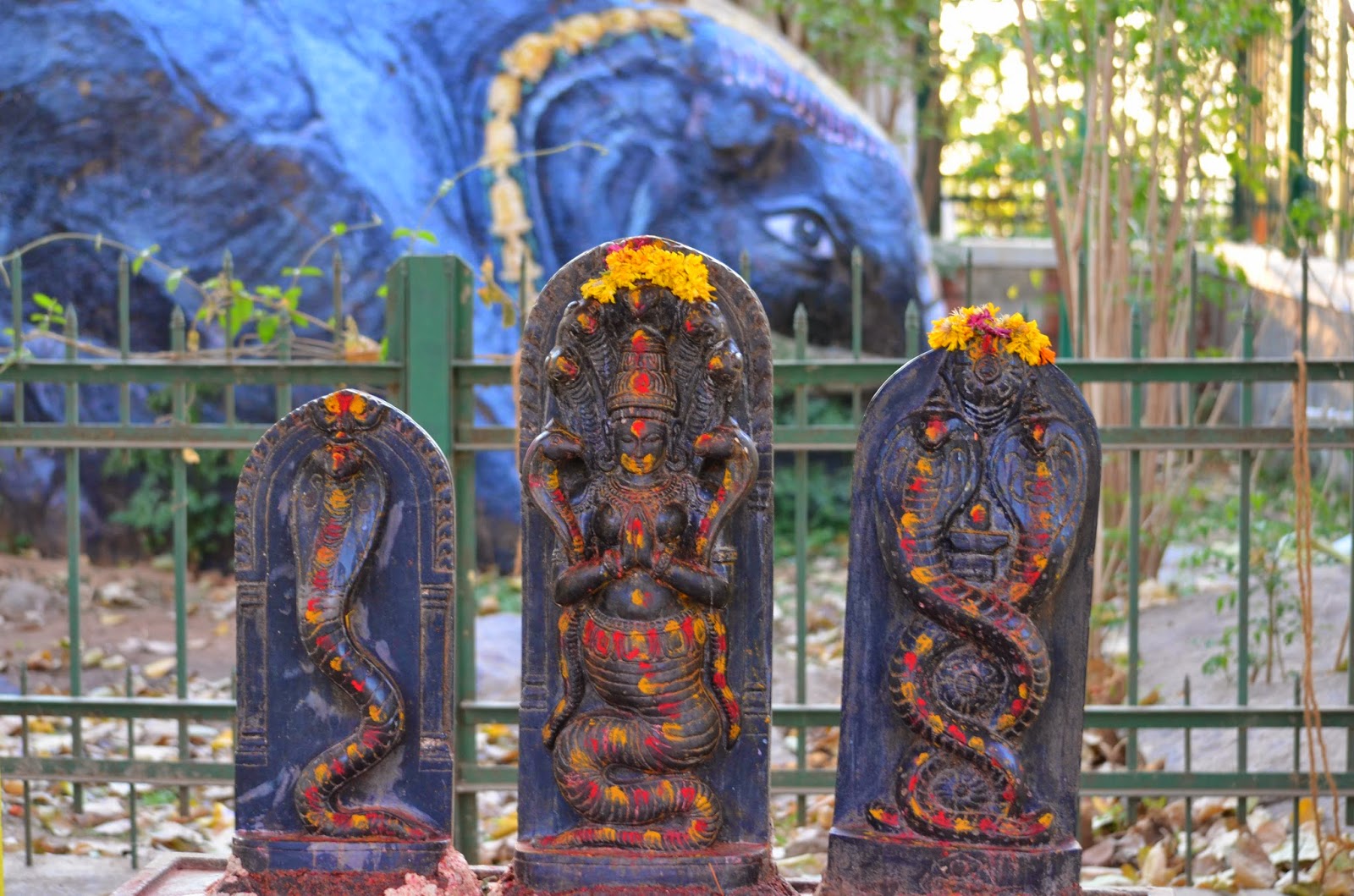Having started off with the Kempegowda Tower that was closest to home (see earlier blog titled The North Western Frontier), I then had the occasion to be in the vicinity of the two towers that marked the eastern extremities of Bangalore as envisioned by its founder, Chieftain Kempegowda. I was carrying my DSLR in the first instance and had only my phone camera in the second.
TOWER # 2 :
First, the one that marked the North Eastern end - which is now on the banks of the Ulsoor Lake (in Central Bangalore !). This tower is not normally accessible as it is within Army territory (Madras Sappers). The best view of the tower, given the circumstances, is from the other side of the Ulsoor lake, close to the Tamil Sangam building on Annaswamy Mudaliar Road. Enter the Ulsoor Lake garden area through the gate diagonally opposite the Tamil Sangam building and you will catch glimpse of the Kempegowda tower on U rock, through the bushes, behind the quirkily named Buffalo Ganj island.
The tower presents a very scenic sight, amongst flaming gulmohur trees, with the cool waters of the Ulsoor lake in the foreground. The tower, structurally, appears similar to the ones found at Sadashivnagar and Lalbagh, but seems to have lesser number of carvings on the gopura as compared to the one in Sadashivnagar.
Robert Hyde Colebrooke, a Lieutenant-Colonel in the Bengal Infantry, later to become Surveyor-General of Bengal (1794-1808), who was also a talented artist, apparently depicted one of the four Towers in a lithograph. I found this work of his on the web, depicting East Bangalore. Is it the original Kempegowda Tower or some other shrine ?
TOWER # 3 :
The South Eastern frontier was marked by the best known of the 4 Towers, on the granite rock in the 200+ acre Lalbagh. The rock itself is geologically significant as it is peninsular gneiss (amongst the oldest rocks on earth, about 3000 million years). This is what the Geological Survey of India site has to say about this rock formation : "The Lalbagh hill is composed of dark biolite gneiss of granitic to granodioritic
composition containing streaks of biolite. Vestiges of older rocks are seen in the
form of enclaves within the gneiss. Peninsular Gneiss of the region is dated 2500 to 3400 million years that accreted
in three major episodes, i.e. 3.4 Ga, 3.3-3.2 Ga and 3.0-2.9 Ga. The quarries of
Lalbagh are of great importance for researches on earth sciences towards evolution
of the terrain"
The tower is fenced off to prevent vandalism and the images of the gods on the gopura have been painted in bright colours, unlike in the case of the Sadashivnagar and Ulsoor Lake towers.
There is a stone etching inside the enclosure, explaining the significance of the tower, but the board is not easily readable.
The view from the top of the rock formation is a spectacular view of KH road and tall buildings like UB City beyond.
This tower is built at an altitude like the two others already described in this blog, and would have served its purpose as a watchtower as well. At one point in time, it should have been quite possible to see the three other towers from any of the 4 towers.
This leaves the tower near Kempambudhi lake as the fourth and last one to explore. That is an adventure for another day.


























































